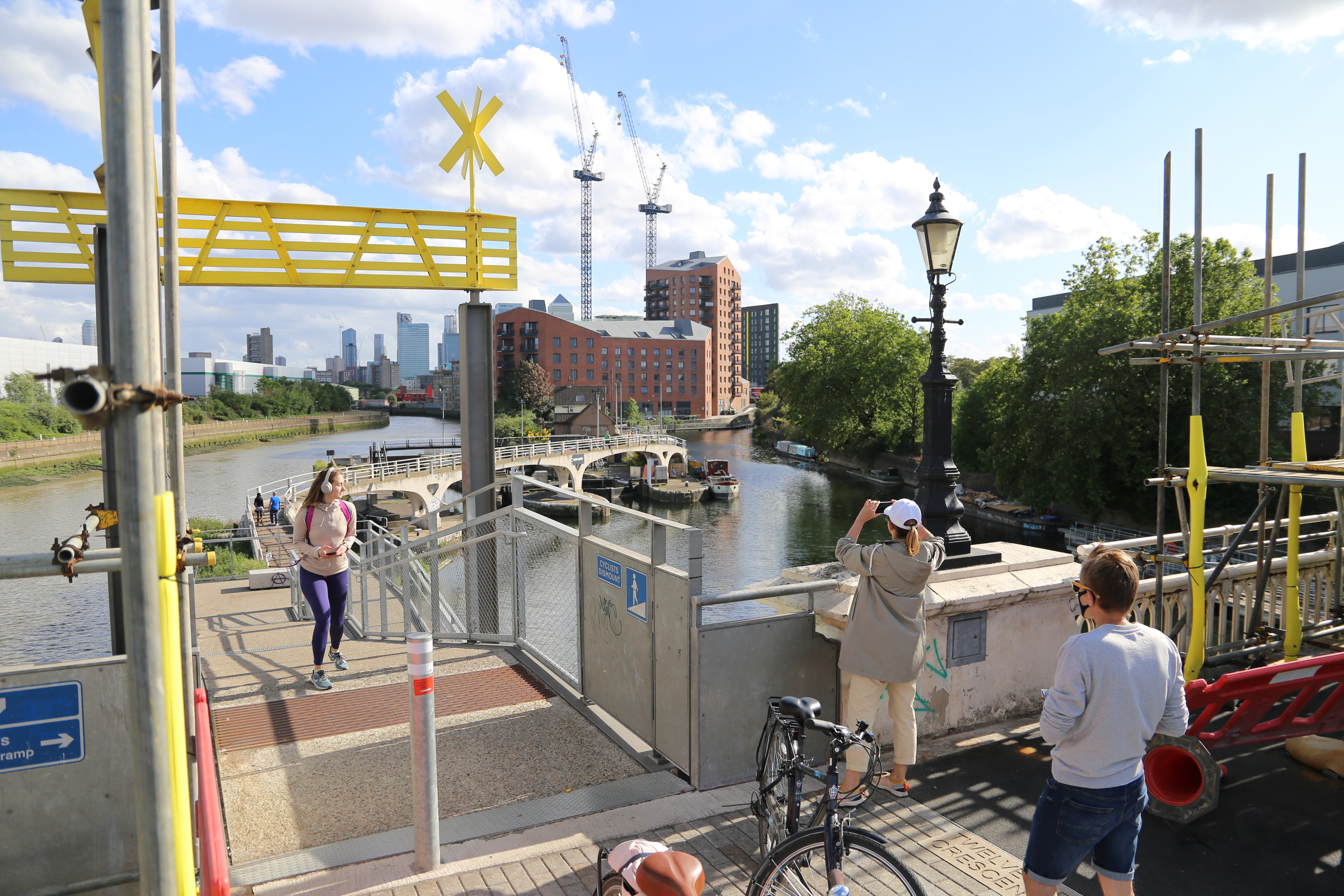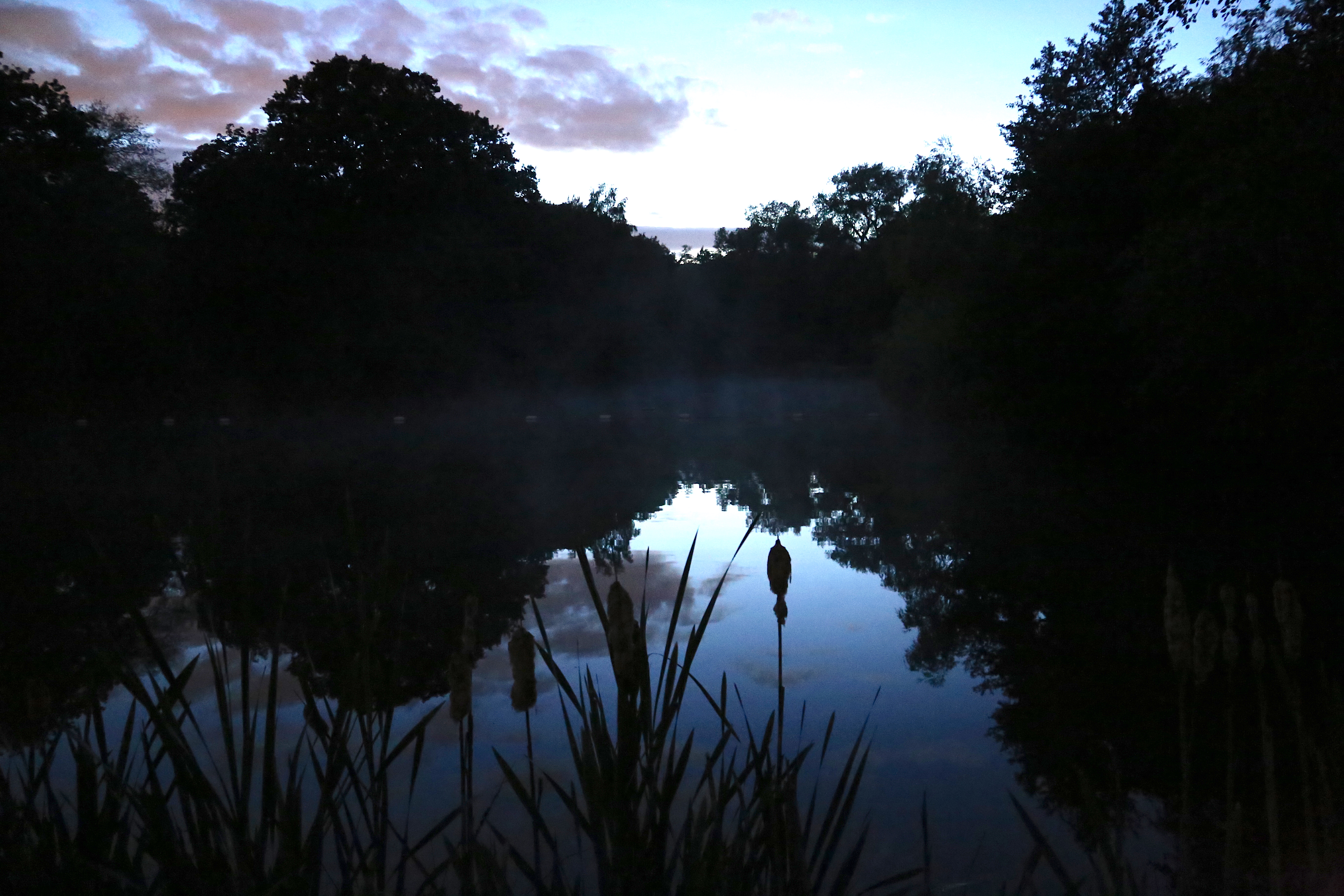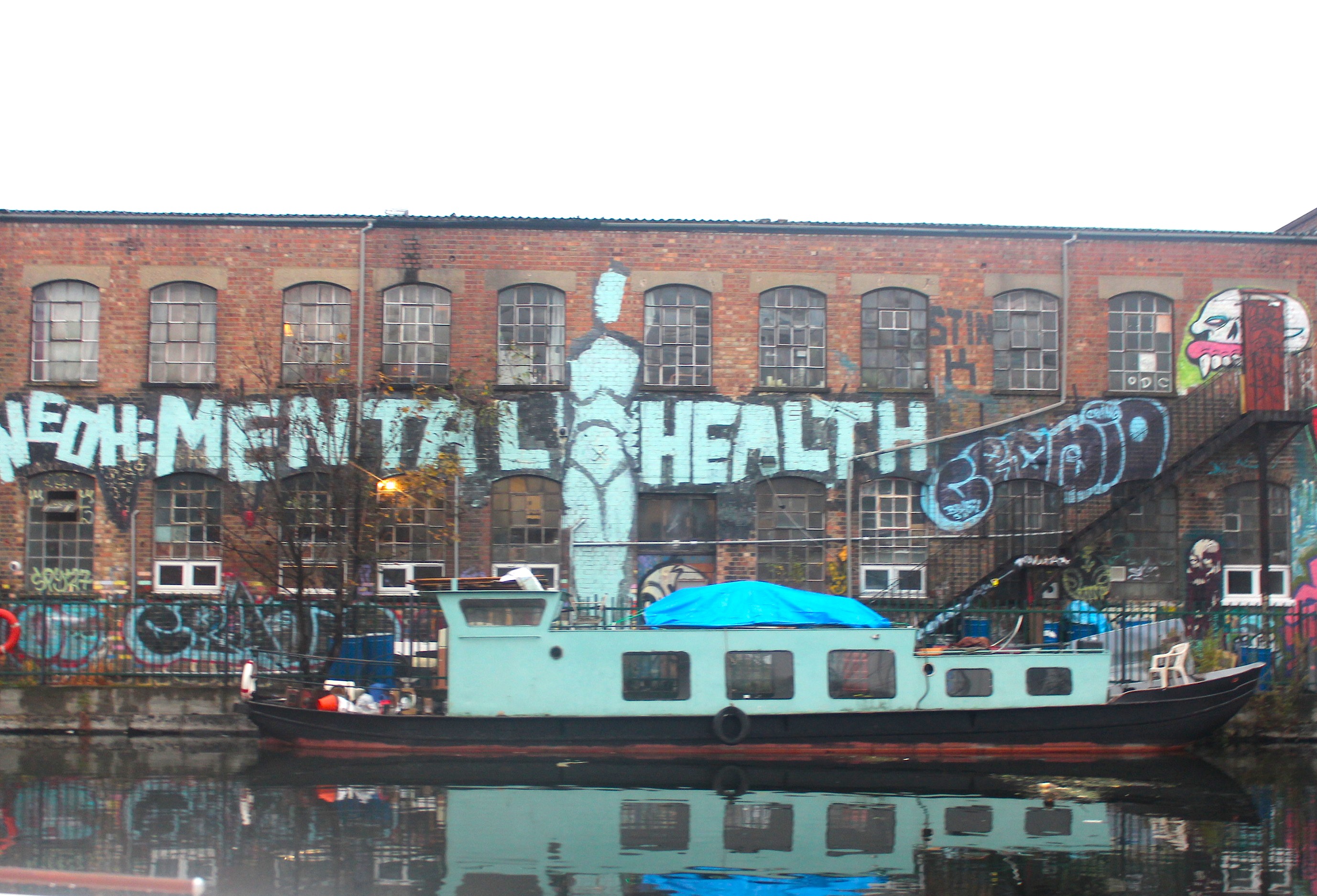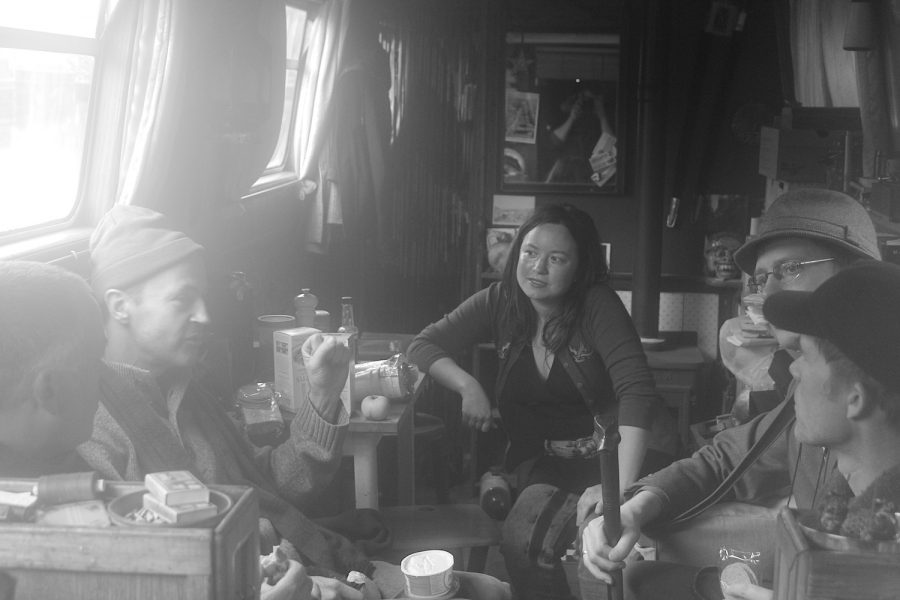List of Pdf Other Walks-a-Week in lockdown:
1. Skulk of Foxes Part 3 – towards a watery commons 6 June 2020
2.. What is the Margin? (with images) – Richard Couzins on Segment 7
3. Miyuki Kasahara & Calum F. Kerr – Detours from Thamesmead, near Segment 22
Loops from the Mead No 1 22 March 2020
Loops from the Mead No 2 28 March 2020
4.. Charlie Fox – ‘Foothills of Pain and Plague – online @ Barbarism from within https://barbarismfromwithin.wordpress.com/walkaweek/walkaweek-jan/
5. Arun Mahajan reflects on Arun.Thames Stroll 1.04.2020 round Pimlico – River Thames
6. A Home-Makers Soundwalk – Listen in or outside the Tesco Metro supermarket, near Battersea Park station.
‘Home-Makers: Urban Expertise in the Philippine Diaspora’ is the name of a three-year research project led by Dr Ella Parry-Davies. This walk one of many for research done by Ella with migrant domestic and care workers in the UK and Lebanon.
Skulk of Foxes Part 3 with 4 streams – towards a watery commons:
Was Rachel Gomme – streamed from the Peck toward Earl’s Sluice area to Thames; Calum F Kerr and Miyuki Kasahara– flowing from waterways in Thamesmead starting at Southmere Lake at 8.30pm and traveling the ditches of Crossness Southern Marshes l; Charlie Fox with Alex McEwen – Sloshing among the pools, springs and streams of Hampstead Heath to trace the source of Tyburn & Fleet and following descent of Fleet River/Holbourne; Richard Couzins – tracing the Hackney Brook moving up stream starting at confluence with River Lea and running into the Northern outfall sewer (along Greenway) then tracing it back up toward old Stoke Newington and Holloway.
Stream 1: Notes from the Hackney Brook Richard Couzins 6/06/2020
Last night’s walk was heralded by a heavy hail storm after the run of seemingly permanent lockdown sunshine. But the storm passed in time for the beginning of the walk, altering the smells and colours of the urban dusk. I saw an empty bottle of fruit cider lying on its side that, if spun like a compass needle, might sign-post the way, as well as becoming a meteorological instrument indicating the fateful effect of weather for those outside.
I started at the southerly confluence of the Lea and Lea navigation canal at Hackney Wick. Just south of this point I believe the Hackney Brook runs into the Lea, but I could see no actual evidence of this. Peter Ackroyd has written that what is underground is a type of state secret whose information is redacted from our experience as well as attempts we may make to gain information. I believe the Hackney Brook was culverted, and became part of the east London sewer system.

A journey has a narrative, and following a river suggests going with the flow from the power of the high mountain rapids to the wide calmness of the estuary, but tonight’s story felt muted. Attempting to follow, the no longer visible route, of a subterranean river has a similar logic to the Inspiral route in finding a curve through the urban grid of streets. I didn’t see any foxes, which was surprising, as there were so few people about, given this was Hackney on a Summer Saturday evening. I overheard people returning from the Black Lives Matter rally in central London. The deserted streets had the melancholy and mystery (and slight menace around Homerton) of a De Chirico painting. Passing under the A12 flyover I came to the closed-up Tiger pub, and on the other side of the road a fast food shop, the strongly illuminated interior of which gave great emphasis to a pair of two-seater table/benches up ended from their usual, bolted to the floor, position with one on end and the other on its side. The anti-covid message to not sit on these objects created by their new dispositions also turned them into minimalist sculptural forms but with the nocturnal sadness of an Edward Hopper painting.
Last night the outside environment felt in limbo, but the listening was spell binding as the many sounds of the unusually quiet streets rolled together. (Richard Couzins)
Stream 2:Photographs from InspiralSE2 Skulk No. 3 – Crossness Southern Marshes 06/06/20
(with Miyuki Kasahara and Calum F. Kerr)
Stream 3: Re-searching the source of the Holbourne (Fleet) and Tyburn River Runs
With Charlie Fox and Alex McEwen (on Hampstead Heath and flowing down the Eastern branch of the Fleet, passed Camden and St Pancras to Fleet Street and Blackfriars Bridge)
As part of the preamble to Skulk 3 Charlie read from Platforms project text from Still Waters Project – re-imaging: London’s Rivers (1992) and an extract from Jan Hewlett’s ‘London’s little rivers: a changing view’ (in London’s Changing Natural History 1858-2008 – classic papers of London Natural History Society, 2008):
‘ “Spot the lost river”, is a fine game to play when you are out walking the streets of London, and, for this, Richard Butler’s paper from the London Naturalist in 1963 is your perfect guide. It is good to gaze across the dip in Picadilly, just west of Green Park station, and imagine the sparkling water of the Tyburn stream, rippling down the hillside towards Buckingham Palace and its two outlets into the Thames east and west of Thorney Island; or to pause on Cannon Street , near the mainline station, blot out for a moment the roar of traffic and towering office blocks, and contemplate instead the little Wallbrook, wild flowers along its banks, babbling gently down Dowgate Hill to the Thames. While the routes of London’s lost rivers can still be traced through local variants in topography, others are chiefly recalled through street names – Fleet Street, where the River Fleet came down through Blackfriars at the foot of Ludgate Hill; Knightsbridge, a bridge across the River Westbourne downstream from Hyde Park. Names like Effra Road, Peckham Rye and Stamford Brook all recall lost streams….
A recurring theme of Butler’s paper is the degradation of London’s waterways; small rivers which once served both as a drinking water supply, a source of food from fish, and in the case of larger ones like the River Fleet also a transport route, gradually deteriorating under the pressure of a burgeoning population. Pollution and blockages took their toil, until the only solution was to put them out of sight and out of mind, beneath the streets. Even at the time that Butler’s article was written, London’s remaining small rivers were still often treated as little more than open drains…. Ecology had not yet become part of urban planning.’ (Hewlett: 2008)
Our skulk on Hampstead was extraordinary, just after the storm had cleared and was inaugurated with an unscheduled but wonderfully welcome meeting with Marcia Farquhar and Jem Finer. Our next skulk will start from near Trinity Buoy Wharf, on the mouth of the Lea River, so we were paying homage to Longplayer and cosmic compositions when we started oozing through the cracks of the Common Heath to locate various sources of babbling water.

As the clouds lifted and the sun disappeared behind the ridge of Kenwood Rise we walked across meadows heavy with rain and sparkling with mist, to listen to dusk choruses at Hampstead Ladies Bathing Pond; then later with moonlit shadows beside the bullrushes that populate the fringe of the Mixed Bathing Pond.
All this rambling got me thinking and musing on rivers and the healing properties of water – even in (near)drowning – and as I walked along the tracing of the Fleet Holbourne, beneath my feet rushing through pipes and culverts, were the life, thoughts and words of Mary Wollstonecraft: her extraordinary life, her candour and courage, and all the tragedy and injustice she fought, retold again through the flow of her own life story and all her watery adventures.
‘Swimming in the Walbrook
A clinical psychologist and artist presented this river as a metaphor for the city in extremis. Although the Walbrook was central to the inhabitants in former times – Roman Londinium was built around it – today it is confined in a storm drain 30 feet below street level. What has been done to the Walbrook illustrates the dysfunction between the city and the natural world, perhaps specifically The City of the Square Mile and the natural world. As the city’s infrastructure has buried the river, so too have people falsely divided human experience, human from human and human from nature. Swimming in the Walbrook consisted of actions, events, rituals and performance that marked the rivers path through London’s financial quarter, and suggested another reality to the ‘common sense’ of current business life. The Walbrook has become a central metaphor in the work Freedom in The City.’ (1989 – Platform website 1/06/2020)
From Butler’s 1962 article:
‘The Holebourne.
To some readers the name “River Fleet” might be more familiar but the Holebourne bore the name only for the lowest part of its course. The term ‘Fleet Brook’ is applied, however, to one of the sources on Hampstead Heath…. The origin of the term ‘Fleet’ has given rise to some speculation. The name could have arisen from the fact that the stream must have been a fairly fast flowing one. From its source on Hampstead Heath to its exit into the Thames at Blackfriars, a distance of ten miles, there is a fall of nearly three hundred feet and even over the lower part of its course from Kings Cross to the Thames the fall is about forty feet. Alternatively, the term ‘Fleet’ also meant a creek and the stream entered the Thames via quite a sizeable creek.’ (Butler 2008: 168-9)
Stream 4: tracing the River Peck to Earl’s Sluice and towards the Thames. (Rachel Gomme)
Part 1 of following the Peck (for Skulk of Foxes on 16 May) took me from the northern tip of Peckham Rye to One Tree Hill, the source of the river – through parks and woodland.
For Part II (6 June), I went the other way, starting from where the Peck emerges above ground, at the south-eastern corner of Peckham Rye Park, and followed it down through the park, through Peckham and on. Last time I got locked into the park as I meandered through, and had an entertaining moment climbing out; this time I stop briefly at the top and then in the Japanese Garden, where I dip my hands in the water, and then move on before they can shut the gates.
Peckham – the homestead of the Peck, and Rye – stream – so Peckham and Peckham Rye are one of the few parts of London where the whole area is named for its river. I like that the area where I live is a river.
Following this way is much harder – it’s downhill, into the basin, but the water has been pushed further down, underground, and the above-ground river now is of traffic, tarmac, noise. I tramp the tarmac doggedly all through the long stretch of SE15, from Peckham Rye to Old Kent Road, amid the sound of cars drowning out the evening birdsong. There is water from a burst main, after heavy storms this afternoon, and puddles that I occasionally step in deliberately, for the splash and play.
After Old Kent Road I’m in light industrial land – unlit and empty. I cross Surrey Canal Road – marker of another waterway, this one definitively lost after it was filled in. Turning onto Zampa Road, where the Peck flows into the Earl’s Sluice, my senses are on high alert, especially when a car slows to a stop behind me. When I checked my route before I set out I gave myself the option of taking a detour here, but I move on into this area of car mechanics and Millwall football ground, where I don’t feel safe even during the day, It’s entirely deserted and it’s where I’d be most likely to meet foxes, but I’m stepping too smartly to catch sight of them, focused on getting through (it occurs to me that they may be holed up in their dens after the rain in any case). By South Bermondsey station I walk through several subway tunnels eerily lit in blue light that doesn’t make me feel any safer.
Finally I’m back out into housing estate, in Rotherhithe. I twist around residential blocks, lost to the river, until I meet Rotherhithe New Road, I think the route should be through Southwark Park but it’s locked at this time. I take a detour up to the pumping station at the top of the park – but this is more connected with the Thames and the Rotherhithe Tunnel which starts just across the road. I turn back towards Surrey Docks, walk along Canada Water and the water now channelled and contained in decorative canals between new residential blocks on the way to the river. I feel disoriented and stifled, as the water is stilled with bamboo and waterlilies. This area too is empty, though lived-in (there are lights in the flats on either side) and here too I don’t feel too safe. It all feels quite inconclusive but maybe that’s right for this place where the living water has been disappeared and replaced with this simulacrum.
From Butler’s article (1962):
‘The Peckham Rye
The word “Rye” means a brook. The Peckham Rye has three sources, one at the southern end of Camberwell (new) cemetery, another at the south-east of Honor Oak station and a third to the east of Peckham Rye Park. …The former course of the Peckham Rye can easily be traced along the western edge of Peckham Rye Common. The brook in former times eventually lost itself in the Thames alluvium and had no continuous channel to the Thames. (Butler 2008: 176)
Walking Round Pimlico – Arun M. (1 April 2020)
Hope you are all well and adjusting to life as we know it. Strange days to say the least and the freedoms lost to an unseen killer that lurks who knows where….my step count has vastly reduced from my norm, however I walk once a day – morning, afternoon, evening or night-time – leaving my flat and weaving through side streets to my first crossing point at Vauxhall Bridge. As I cross observing the Thames ebb and flow and where the two lost rivers the Effra & Tyburn meet. It’s such a relief to be out and walking, my mood is uplifted as I look on the sunlit river and its changing temperament, whether it be high or low, incoming or outgoing, all different at the times of day or night … .
One of the best things I have noticed is the Air Pollution levels have vastly reduced in surrounding area. As I make my way along Albert Embankment passing MI6 and towards the Thames is the Dock floating pub – memories of drunken fun times had on deck of the 1930’s converted Dutch barge come to the fore and jovial days and arsing around with friends. Looking across the road sitting on the corner is one of London’s most beautiful Victorian pubs The Rose…. How lovely it would be to sit outside with a pint but not today. This busy pub frequented by locals spies and tourists is closed like the rest of London and for how long! I walk on towards Lambeth Bridge passing one or two other individuals who refuse to give eye contact as they pass on by. I think to myself is it the bright blue disposable gloves and mouth covered face that’s putting them on edge?
Sitting for a while in Lambeth Palace Garden – part of William Blake walk we put together with Charlie (Other Southwark/CoolTan Arts Walk), I reflect that this current situation is nothing new for the Thames, as it been through Plague, small pox, cholera, the great fire along with world wars and there will be more to come after I’m long gone. The river will give life and Magnificence to the city I love. My mind wanders to what to cook what to eat drifting from the present moment and makes me more aware of the small things that used to be but now are highlights in ones’ day. My crossing point takes me back over the river and into Westminster passing the Houses of Parliament and Westminster Bridge, homeward bound as I make my way down Horseferry Road passing the Coroners Court – a grand grade 2 listed building – now extended on the side by adding a large tent on to the available space (used by Black Cabs for parking). It is now temporary morgue set up for victims of Covid19 Virus. Last time I saw the same structure here, was for the victims of the Grenfell Tower fire. This corner of Horseferry road and Regency Street is generally a busy hub for people gathering to use the cafes – a favourite being the Regency Cafe a throwback to the Forties – a meeting point for black cabs drivers and locals alike all silent and void of people now. Not far to go, another few minutes walking and I’m home. I am asthmatic and should not be out or have any face-to-face contact. That’s easier said than done.
 What is the Margin? (pdf with images)
What is the Margin? (pdf with images)
Today I set out for a walk on Hackney Marshes, my route taking me along a small section of Segment 7 of the Inspiral route on the towpath of the Lea navigation canal at the edge of Hackney. I won’t stay on the towpath too much today to observe social distancing. I walked Segment 7 with the Inspiral group twice before. On both walks we stopped at boats for refreshments. The first time we had tea on a narrow boat owned by friends of one of the Inspiral group. We discussed the issues of living on the canal and having to regularly move the boat to a different mooring. The second time we bought beer from a boat turned into a bar, on a hot Sunday afternoon, near The White Building. More people than ever live here on boats on the canal.
Lea Navigation Canal looking south from Middlesex Filter Beds Nature Reserve
Wattisfield Road London E5
On the way to the canal I pass a sign informing the public of the two metre social distancing rules with a double-ended arrow. I remember this symbol from engineering drawing; the trouble is it applies to stationary objects more than moving subjects. If you reverse the direction of the arrows you create an optical illusion in which the line appears longer, as if to emphasize the fuzziness of human perception and the complicated realities of life. It’s Spring and the two- metre separation is like a human version of how plants and seedlings are separated out and replanted. I am hoping we humans can also grow back together soon.
How am I to walk along the towpath today in the Covid 19 epidemic? The Inspiral walks increased thinking about walking, and walking for thinking. Walking involves a balance between going from A to B and what you do in between. Today I must drift from the straight line to maintain social distancing and walk with a heightened awareness. Therefore – do walk on the grass and do not walk on the path, do not walk on the desire line, instead walk in unoccupied spaces in the margins of the well-trodden path. The spiral route of the Inspiral path already creates a new path and imposes a tangent onto the ‘one foot in front of the other’ straightness of travelling by foot.
Today I choose to step sideways off the towpath onto Hackney Marshes with its 88 football pitches. The large area of grass provides an experience of the sky not available everywhere in the city. The goalmouths stand empty but have not been taken down like the tennis courts I just passed, the nets removed as a precaution against Covid 19. This iconic mass of goal posts is only busy at weekends and this gridded landscape often stands silent bearing lonely witness to wider events as they do now with no football fixtures.
When I came here on my bike yesterday I travelled across the marshes onto another margin at the edge of the Olympic park, a road known to Cycle Club Hackney as ‘the runway’. This road nestles between the A12 and the Velopark and was briefly used to take traffic to the Westfield shopping centre, with a security checkpoint, before the 2012 Olympic games. No traffic has travelled along its half-mile length since 2012. It appears to be unnamed but turns into Lesney Avenue at one end, named after the now demolished Matchbox toy factory on the towpath route of Inspiral segment 7.
‘The Runway’ with Velopark Velodrome on left, A12 out of sight directly right.
Some of the Inspiral routes have raised issues of landownership and rights of way, for example where parts of the Thames Pathway have been closed. The Ramblers Association are currently responding to government attempts to take away access to lost paths. The ‘runway’ could be described as disused but not lost; a half-mile piece of pristine road, but who can use it? When Cycle Club Hackney asked for a reduced community rate to use the adjacent road track they were refused and started to use the ‘runway’ for free instead, but then the Velopark tried to charge them for that. It wasn’t in my plan, but yesterday I cycled up and down ‘the runway’ on my clapped out old bike for the first time. I spent many Saturday mornings here several years ago watching my kids do the same with the cycle club. The ownership of the Olympic park seemed murky after control was ceded from the boroughs bordering the site. At this time of heightened awareness of social space, and its control, we can reflect on the extent of permission to be in space, the right to roam, and to inhabit space at this time when our daily movements repurpose the margins of space.
Richard Couzins 30th March 2020 (to read with Richard’s images please click on the pdf link)

